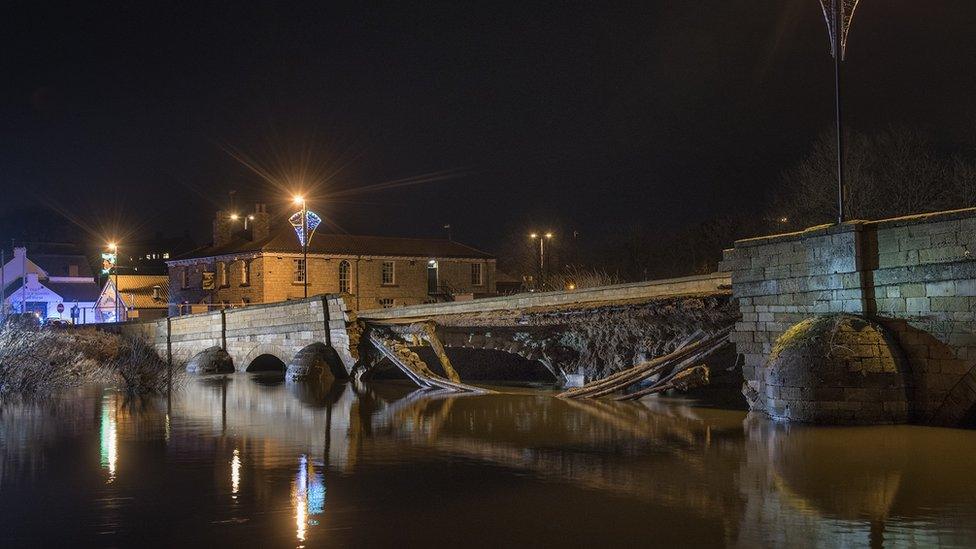December storms' trail of destruction
- Published
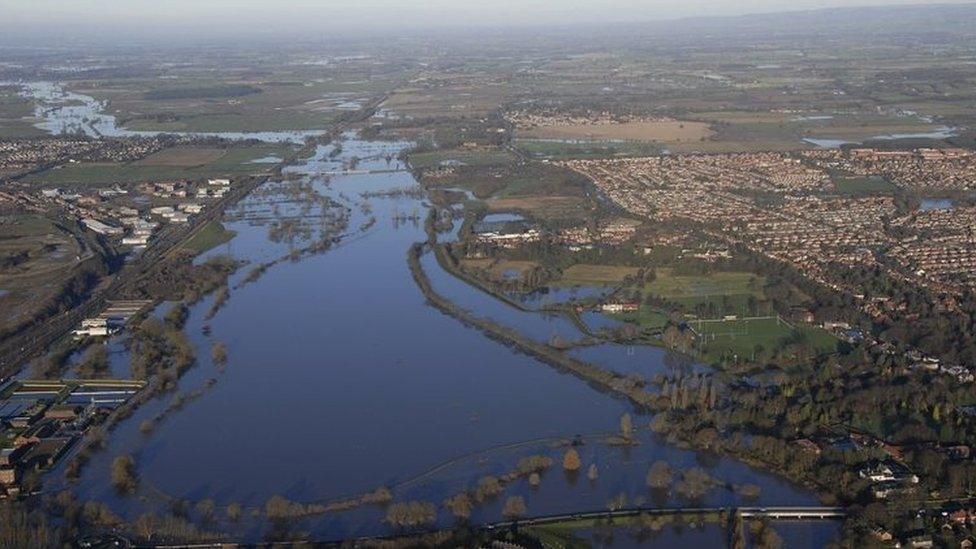
December 2015 has been the wettest on record for parts of the UK and has seen several communities swamped by rising waters.
What storms hit when and where, and what damage did they cause?

Storm Desmond
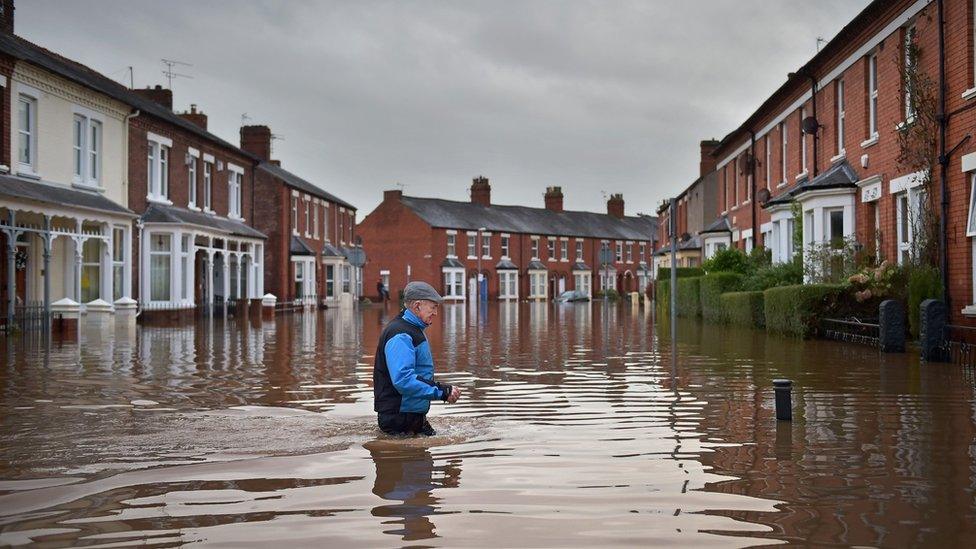
A Carlisle resident makes his way through the floodwater following Storm Desmond
Storm Desmond was the Met Office's fourth named storm of the season, and brought severe gales and heavy rainfall to southern Scotland, the north of England, parts of Wales and Northern Ireland when it hit during the first week of December.
Science Editor David Shukman assesses the scale of the damage
Rainfall in this storm broke all previous UK records, with the Met Office saying Honister in Cumbria received 341.4mm (13.4in) of rain in the 24 hours between 4 and 5 December.
The counties to bear the brunt of the storm were Lancashire and Cumbria - police in the latter declared a major incident.

The storm flooded thousands of homes - more than 5,200 in Cumbria and Lancashire alone.
Tens of thousands of properties were also left without power, dozens of schools were closed, about 40 bridges were either damaged or shut, and rail links were severely disrupted.
The Army was called in to help people evacuate their homes and the Royal National Lifeboat Institution was also drafted in.
The devastation resulted in criticism of the government after multimillion-pound defences built following floods in Cumbria in 2005 failed to keep the deluge away from people's homes.

Four days after the storm, lighter rain falling on already saturated ground led to yet more flooding. And yet more light rainfall on Tuesday 22 December left some parts of the county under water for a third time in a month.
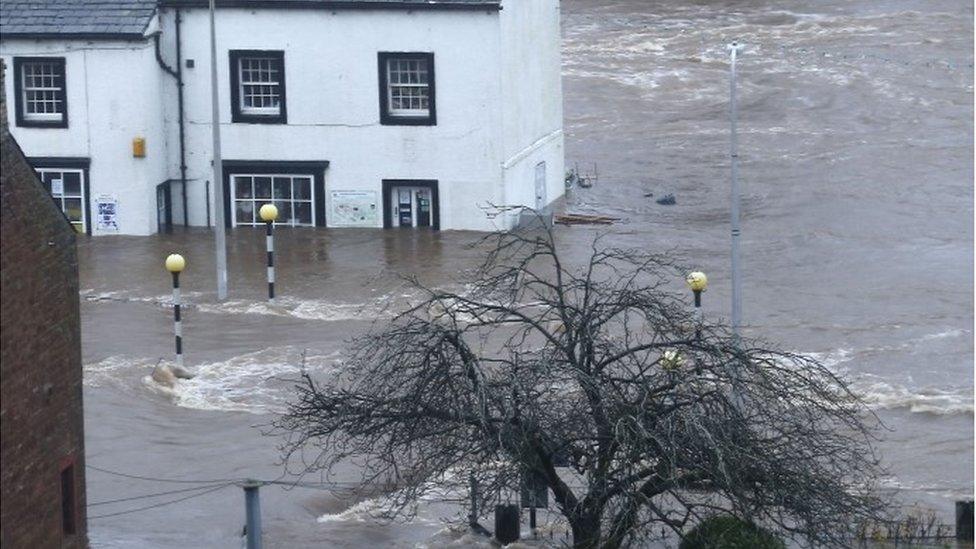

Storm Eva
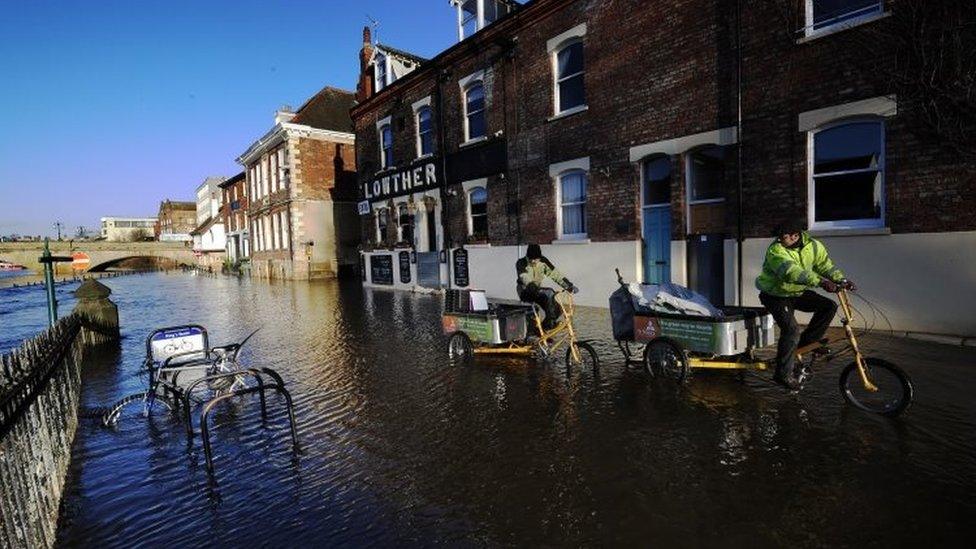
Among the rivers to burst its banks as a result of heavy rainfall over Christmas was the River Ouse in York
Storm Eva first struck the Republic of Ireland.
Winds of up to 85mph were felt in Northern Ireland, and in Ireland around 6,000 properties were left without power.
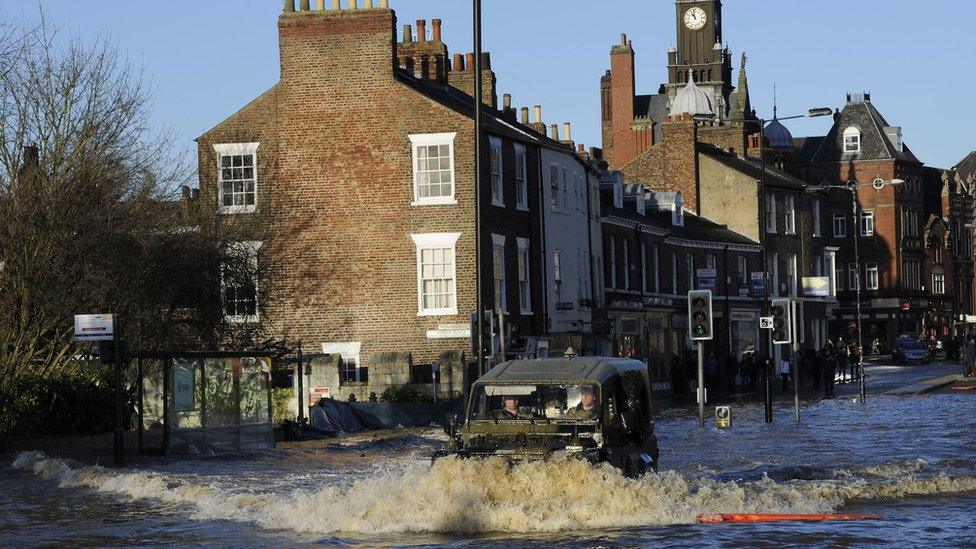
The Army were helping in York on Sunday
That was followed by heavy rainfall in Wales, England and parts of Scotland - but the Met Office did not specifically define this as part of Storm Eva.
The Environment Agency issued 149 flood warnings - seven of them severe - and 123 alerts, which were all in place mainly across northern England and north Wales.
Once again worst hit were parts of northern England - chiefly Cumbria, Lancashire and West Yorkshire - many of which were recovering from the aftermath of Storm Desmond.
Hundreds of people were forced to evacuate their homes as rivers burst their banks the Cumbrian towns of Appleby, Keswick and Kendal.

In York, 500 homes were flooded as the River Ouse burst its banks, and the Army was once again called in to help.
Police in West Yorkshire said more than 2,000 homes were affected by flooding in Calderdale.
In total about 20,000 homes were left without power across the UK.
The BBC News helicopter captured scenes of the extent of the flooding

Timeline: December flooding
5 December: Storm Desmond brings more than a month's rain to parts of Cumbria, leading to flooding in Carlisle and other areas
12 December: River levels remain high and more than 70 flood warnings are issued amid more heavy rain
22 December: Communities in Cumbria flood again - some for the third time in less than a month
25 December: More than 100 flood alerts and warnings are issued across England and Wales as Storm Eva takes hold and brings torrential rain
26 December: Residents in West Yorkshire and Lancashire are evacuated from their homes and flooding hits Leeds, Greater Manchester and York
27 December: Police in York advise hundreds of people to evacuate their homes as 24 severe flood warnings remain in place in the north-east of England

Storm Frank
Further rain is forecast for the last few days of December, with Storm Frank due to sweep in from Tuesday evening - Cumbria and south and central Scotland are once again at most risk.
There are already nine severe flood warnings - meaning "danger to life" - in England and Wales, mostly centred on York.



- Published29 December 2015
